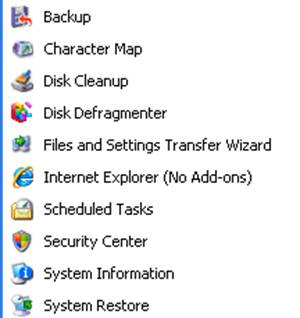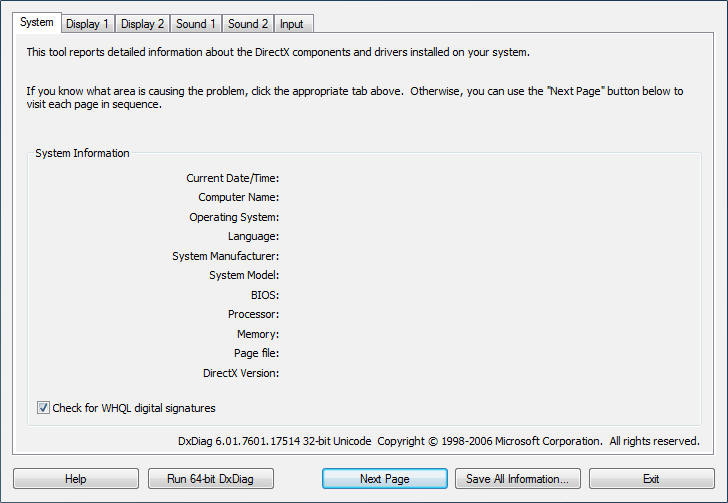System Utilities
CompTIA A+ Exam objectives 1.5
(Given a scenario, use Microsoft operating system features and tools.)
What are system utilities?
Utility programs are designed to carry out specific tasks. The tasks to be carried out are not typically performed by the operating system as part of its day to day operating of the system. Utility programs are designed for more specific purposes. Common examples of utility software include anti-virus software, disk defragmenters and system restoration.
Here is a picture example of some utilities, some of these will be covered, but there are some more important ones that will be explained for this lesson.

Here are the 12 system utilities needed for the A+ exam:
REGEDIT
The Windows Registry serves as an archive for collecting and storing the configuration settings of Windows components, installed hardware/software/application and more. A Windows component, hardware or a software, retrieves the registry entries or keys relating to it, every time it is started. It also modifies the registry entries or keys corresponding to it, in its course of execution. When keys are added to the registry, the data are sorted as computer-specific data or user-specific data in order to support multiple users.
The Regedit command launches regedit.exe
COMMAND
This command launches a standard command prompt for the user.
Services.msc
This command in the command console launches the services console.
MMC
MMC is a centralized data base that contains many tools which are typically scattered, and brings them all together so that the user may select which ones are needed.
MSTSC
This program allows a PC connected by a remote desktop sessions to be able to edit the config files of different PCs using the RDP.
NOTEPAD
Notepad is a secure and reliable text editor in Windows.
EXPLORER
Explorer is Window’s file management system. It does many actions, such as creating, copying and renaming files and folders.
MSINFO32
Essentially launches system information. Windows says this :
You can use the MSINFO32 command-line tool switches to do all of the following:
- Use System Information from a batch file
- Create .nfo or .txt files that contain information from specified categories.
- Open System Information and display only specific categories.
- Save a file silently (without opening System Information).
- Start System Information connected to a remote computer.
- Create a shortcut that opens System Information in a frequently-used configuration.
DxDiag
This tool can be used to collect information about DirectX sound and video. Can help for troubleshooting a problem.
Disk Defragmenter
Rearranges the file fragments on a disk into contiguous clusters to be able to read them faster.
System Restore
This utility can create system images, and then restores the system when asked by user.
Windows Update
Can be used to manage software and security issues, and allows microsoft to fix them quickly and uniformly.
Learn more about our CompTIA A+ Certification
Credits: HN Computing , Comodo , CertBlaster , Windows Help









